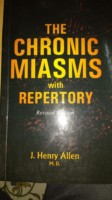CONSTITUTIONAL REMEDIES – Talks on Classical Homeopathy Part 3 – Discussion with Geroge Vithoulkas
IMPOTENCY – Talks on Classical Homeopathy Part 3 – Discussion with Geroge Vithoulkas
MELANOMA – Talks on Classical Homeopathy Part 3 – Discussion with Geroge Vithoulkas
TALKS ON CLASSICAL HOMOEOPATHY PART III DISCUSSIONS with George Vithoulkas
The 10 Miasm System – Derived from Rajan Sankaran Miasm System
Best Homeopathic Medicines for Panic Attacks
 What are Panic Attacks?
Panic attacks are severe episodes of sudden anxiety, apprehension or fear. They occur without any real or apparent danger and mostly bring on some form of physical reaction such as dizziness, heart palpitations, dyspnea, nausea and faintness. Panic attacks can be truly frightening and leave the person shaken and deeply upset. Once the mind goes into panic mode, the person losses control over his reactions. Certain situations such as a trauma, past experience or phobia can act as triggers.
Advantage of Homeopathic Treatment
Homeopathy is a proven alternative treatment option for anxiety related disorders such as panic attacks. Natural and safe, Homeopathic medicines are deep acting and have no side effects on the body. Unlike the conventional mode of medicine, Homeopathic medicines do not supress the disease and its symptoms. In fact, they attack the disorder at the root and set off the body’s own restorative processes, making it strong enough to completely eradicate the disease. Supressing the disease process makes it stubborn. Homeopathic medicines are a natural, healing alternative. More importantly, they are not habit-forming in nature and can be taken read more [...]
What are Panic Attacks?
Panic attacks are severe episodes of sudden anxiety, apprehension or fear. They occur without any real or apparent danger and mostly bring on some form of physical reaction such as dizziness, heart palpitations, dyspnea, nausea and faintness. Panic attacks can be truly frightening and leave the person shaken and deeply upset. Once the mind goes into panic mode, the person losses control over his reactions. Certain situations such as a trauma, past experience or phobia can act as triggers.
Advantage of Homeopathic Treatment
Homeopathy is a proven alternative treatment option for anxiety related disorders such as panic attacks. Natural and safe, Homeopathic medicines are deep acting and have no side effects on the body. Unlike the conventional mode of medicine, Homeopathic medicines do not supress the disease and its symptoms. In fact, they attack the disorder at the root and set off the body’s own restorative processes, making it strong enough to completely eradicate the disease. Supressing the disease process makes it stubborn. Homeopathic medicines are a natural, healing alternative. More importantly, they are not habit-forming in nature and can be taken read more [...] Homeopathic Rubrics of spring season from all the major repertories – Dr Devendra Pal Singh
 I have collected rubrics of spring season from all the major repertories. And I wish you all study them deeply. So that when patient comes to you in this season with complaint of dysentery so you better be prepared that you have to consider kali. bi.
Now we all are familiar with spring coryza of allium.cepa, and autmnal dysentery of colchicum. we must think why season used as a symptom by our stalwarts, !!!!Because in both clinical and drug proving they found affinity of certain drugs towards particular seasons with associated complaint.
For eg vertigo in spring season apis is only medicine. In this season you will have complaints of both acute and chronic like vertigo, asthma, cough, skin eruptions, coryza, dysentery, fever, toothache, facial neuralgia, diarrhea, hoarseness of voice, weakness, stomach ulcers, rheumatism and many more.
I give a case example, a chronic patient of asthma ive tried everything but failed ars, nat.s, tub, sambucus but last year he presented with dysentery in spring season and what happened was after kali.bi dysentery was gone and also the asthma.
Some times acute phase demands the medicine of inner vitality which will lead to cure.
Some read more [...]
I have collected rubrics of spring season from all the major repertories. And I wish you all study them deeply. So that when patient comes to you in this season with complaint of dysentery so you better be prepared that you have to consider kali. bi.
Now we all are familiar with spring coryza of allium.cepa, and autmnal dysentery of colchicum. we must think why season used as a symptom by our stalwarts, !!!!Because in both clinical and drug proving they found affinity of certain drugs towards particular seasons with associated complaint.
For eg vertigo in spring season apis is only medicine. In this season you will have complaints of both acute and chronic like vertigo, asthma, cough, skin eruptions, coryza, dysentery, fever, toothache, facial neuralgia, diarrhea, hoarseness of voice, weakness, stomach ulcers, rheumatism and many more.
I give a case example, a chronic patient of asthma ive tried everything but failed ars, nat.s, tub, sambucus but last year he presented with dysentery in spring season and what happened was after kali.bi dysentery was gone and also the asthma.
Some times acute phase demands the medicine of inner vitality which will lead to cure.
Some read more [...] 
 Hussain Kaisrani, The chief consultant and director at Homeopathic Consultancy, Lahore is highly educated, writer and a blogger
Hussain Kaisrani, The chief consultant and director at Homeopathic Consultancy, Lahore is highly educated, writer and a blogger 